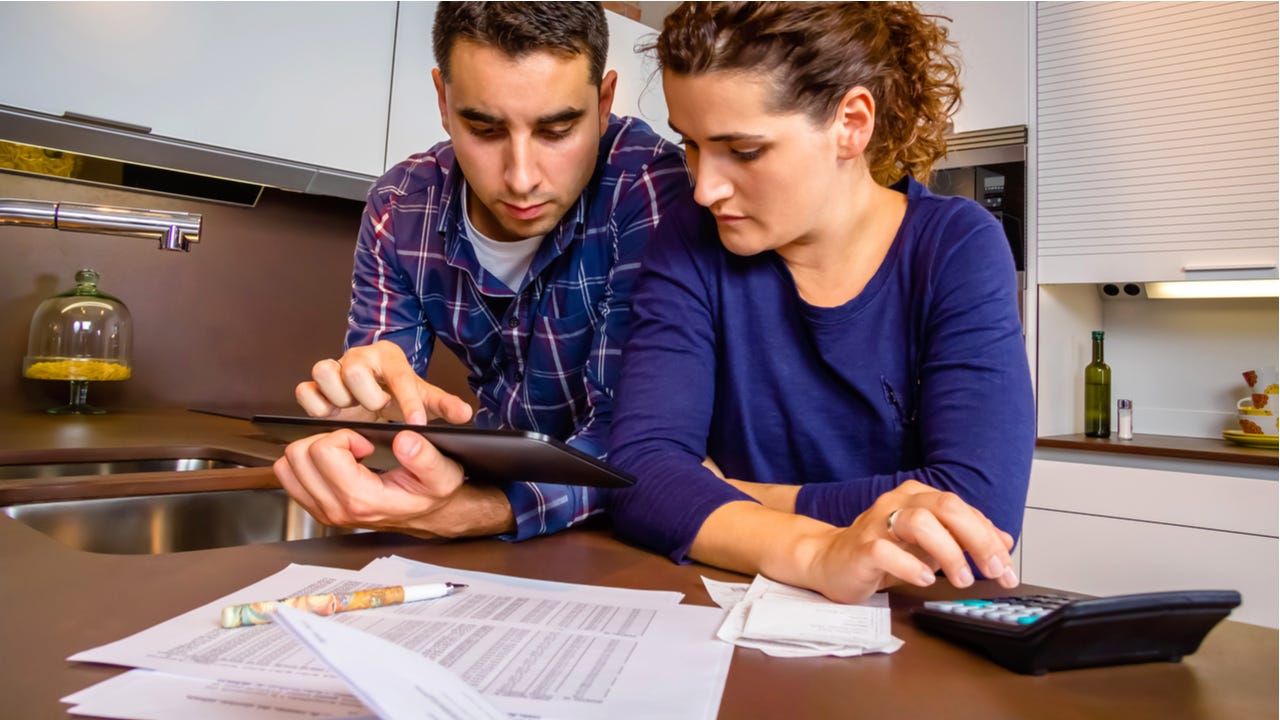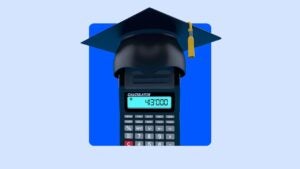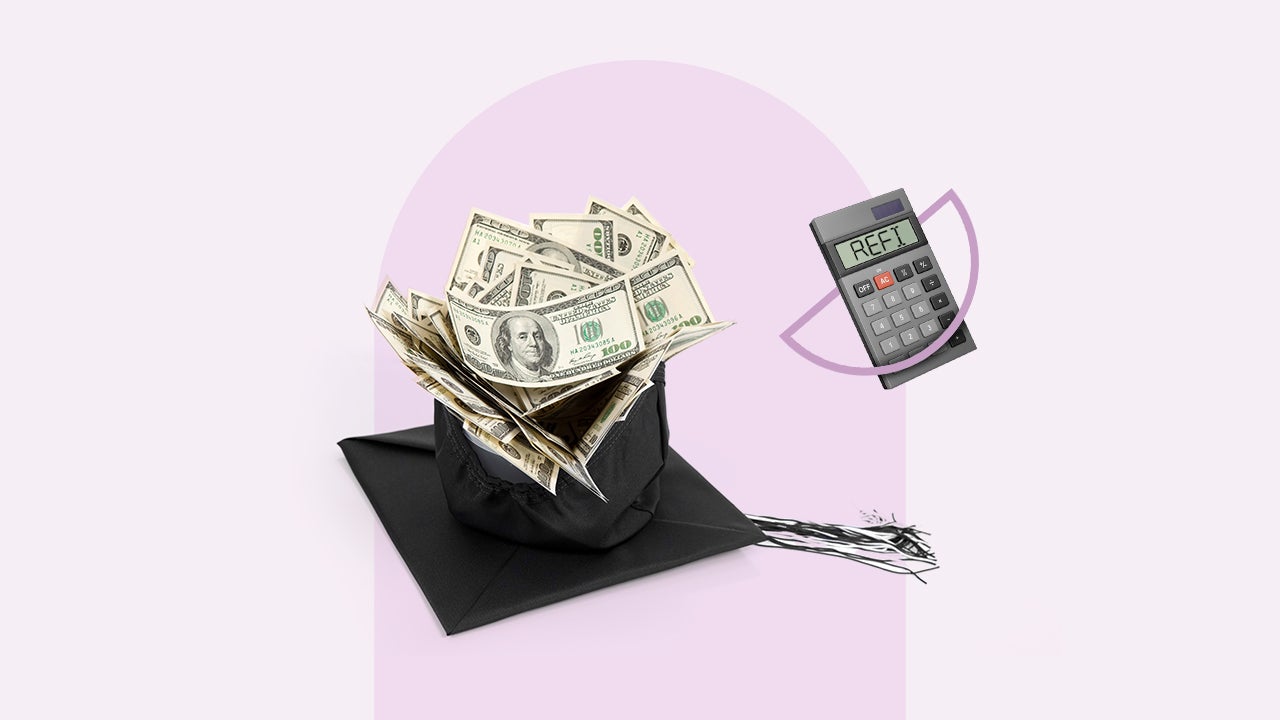What is student loan default?

Key takeaways
- A defaulted student loan happens when the borrower does not make payments on their student loan, often for a few months or more.
- Having a student loan in a default state can have serious consequences, including poor credit, the loan payments becoming due in full immediately, the lender taking you to court and not being eligible for forbearance or deferment.
- To avoid the worst consequences, you can consider federal student loan rehabilitation or consolidation or negotiate a settlement for private student loans.
Student loan default occurs when a borrower fails to pay their loans according to the terms of their loan agreement. The exact timeline varies depending on whether you have federal or private student loans. Defaulting on a student loan has serious consequences. Your entire loan balance may come due immediately and you will be ineligible for forbearance and deferment.
How do you go into default on a student loan?
When you miss your due date, your loan first becomes delinquent. Your student loan will remain delinquent until you pay the amount you owe, qualify for deferment or forbearance, change your repayment plan or enter default.
Once your student loan payment is 90 days late, your student loan servicer will report your delinquency to the three credit bureaus — Experian, Equifax and TransUnion.
At that point, your loan will transition from delinquency to default on a timeline that depends on the type of student loans you have.
- With federal student loans, your loan is usually considered in default when you don’t make your scheduled payments for 270 days. One exception is Perkins Loans, which can be considered default if you miss a single payment.
- With private student loans, you are usually considered in default after you miss three monthly payments or 90 days total.
How do I know if my student loans are in default?
If your student loans become delinquent or past due, your loan company or servicer will likely notify you. You may receive a notice in the mail, a call from your servicer or an email with details on your late payment.
Once your student loans enter default, you should see them listed on your credit reports. You can get free weekly credit reports from the three credit bureaus using AnnualCreditReport.com.
You can also log into the Federal Student Aid website to see the status of your federal student loans, including any information on past-due, delinquent or defaulted amounts.
What happens if I default on my student loans?
You could face multiple consequences if your loan enters default.
- Credit approval becomes difficult: Default hurts your credit score. So it also hurts your ability to get approved for anything involving a soft or hard credit check. You might have trouble getting a credit card, a car loan, a mortgage, a cell phone, utilities or affordable homeowners insurance rates. You may face higher rates or need a co-signer.
- You owe the entire balance immediately: With federal student loans, your entire unpaid balance and owed interest become immediately due through a process called “acceleration.”
- You lose borrower protections and access to federal aid: Your federal loans will no longer be eligible for deferment or forbearance, nor can you change your repayment plan. You won’t be able to access additional federal student aid, either.
- You may be taken to court: Your federal or private loan servicer can take you to court and your wages could be garnished. In addition, you will likely be on the hook for court costs, collection fees, attorney fees and additional costs associated with the collection process.
- Your academic transcript may be withheld: Your school may withhold your academic transcript until you get your student loans out of default. However, note that schools aren’t allowed to withhold your transcript over defaulted-on federal loans.
While all of this takes place, late fees and interest will continue to accrue on your debts, meaning the problem only gets worse.
Defaulting can impact your life and finances for years to come. If you are concerned that you may default or are having financial challenges, do not ignore the issue. Reach out to your loan servicer proactively and find out about your options for avoiding default.
How do I get my student loans out of default?
In addition to understanding student loan default, it’s important to know how to turn the situation around. If you’ve already defaulted on your student loans, there are ways to get back in good standing.
Getting federal student loans out of default
There are three main ways to get your federal student loans out of default: paying your entire loan balance in full, pursuing loan rehabilitation or applying for loan consolidation. Since most people cannot afford to pay their loans off in one big chunk, rehabilitation and consolidation are the only options most can consider.
Federal loan rehabilitation
Currently, loan rehabilitation has been put on hold in favor of the Fresh Start program. However, typically, federal loan rehabilitation starts with contacting your servicer. When you rehabilitate a federal Direct Loan or FFEL loan, you must:
- Make nine affordable monthly payments (as determined by your loan holder) within 20 days of the due date and agree to these terms in writing.
- Make all nine of the agreed-upon payments during a period of 10 consecutive months.
The monthly payment you make under loan rehabilitation typically equals 10 or 15 percent of your monthly discretionary income. According to the U.S. Department of Education, discretionary income is “the difference between your annual income and 150 percent of the poverty guideline for your family size and state of residence.”
Your monthly payment during the rehabilitation process could be as low as $5.
Consolidation
With federal student loan consolidation, you combine your existing federal student loans into one new one. To qualify for this plan for defaulted loans, you must do one of the following:
- Agree to enroll your new Direct Consolidation Loan in an income-driven repayment plan.
- Make three consecutive, voluntary, on-time, full monthly payments on the loan in default before consolidating.
This option does not remove your default from your credit record.
Getting private student loans out of default
The rules are different for private student loans. If you have private student loans in default, you may be able to negotiate a settlement on your debt in collections. You could also try to work with your loan servicer to get up to date. Start by reaching out and explaining your situation. Some lenders might allow you to adjust your repayment plan to better fit your budget.
Many with unmanageable private student loan debt reach out to a student loan lawyer for help. Another option is working with a certified credit counselor — they can help you create a plan to repay your defaulted loans.
Avoiding student loan default
Once you have taken steps to get your student loans out of default, it’s important to avoid making the same mistakes again. Your best move is making sure that you have a monthly payment that you can afford without financial hardship.
You can do this by:
- Looking into income-driven repayment plans that let you pay a percentage of your discretionary income on your loans for 20 to 25 years.
- Refinancing your student loans with a private lender to secure a lower interest rate and a more affordable payment. (However, think twice before refinancing federal student loans since it means you’ll lose access to federal benefits like income-driven repayment plans and student loan forgiveness programs.)
- Choosing among federal student loan repayment plans (for existing federal loans), which may let you repay your loans for up to 30 years.
Also make sure that you set yourself up for success when it comes to planning for your student loan payments. This can mean starting a monthly budget that helps you plan for each of your bills and your average expenses, but it can also mean cutting discretionary spending so you have more wiggle room in your budget each month. Finally, you can also consider setting up your student loan payments to be sent in automatically so you never forget to pay.
Bottom line
Defaulting on your student loans carries serious consequences, like harm to your credit and possible wage garnishment. If you have federal student loans, you can get out of default through loan rehabilitation or consolidation. Your options with private student loans vary by lender. Contact your lender or loan servicer immediately to discuss your options if you’ve defaulted. If you need help negotiating with your lender or creating a plan to pay off your loans, consider working with a student loan lawyer or credit counselor.
Frequently asked questions
You may also like

How to calculate student loan interest

What is student loan refinancing and how does it work?




